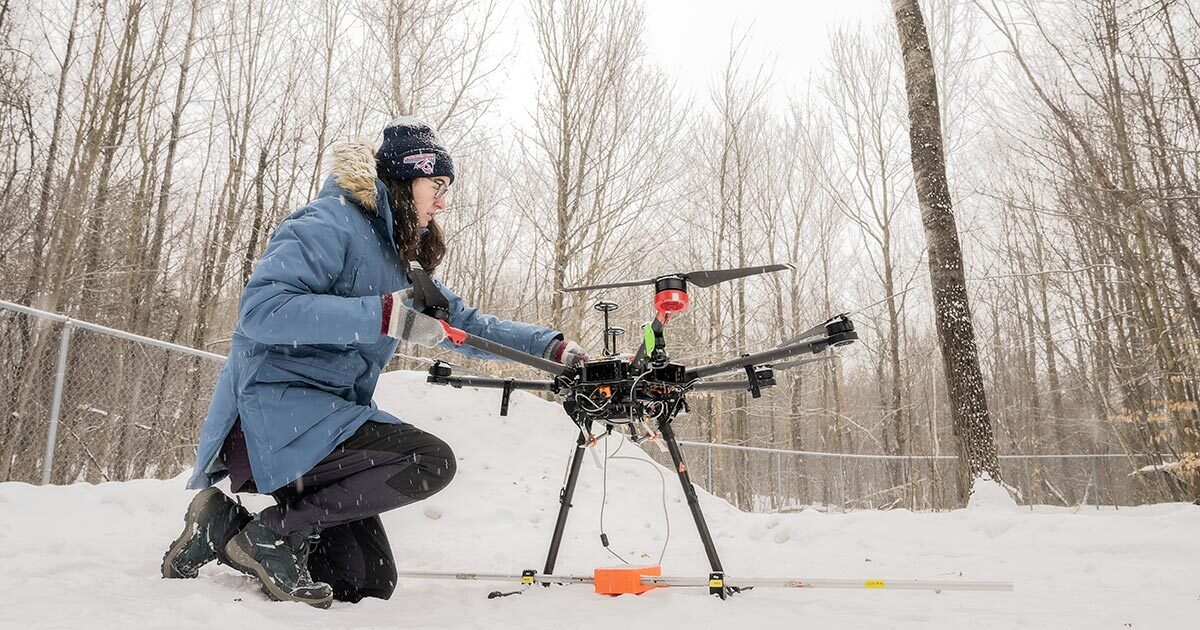Ensemble de production de masque respiratoire réutilisable
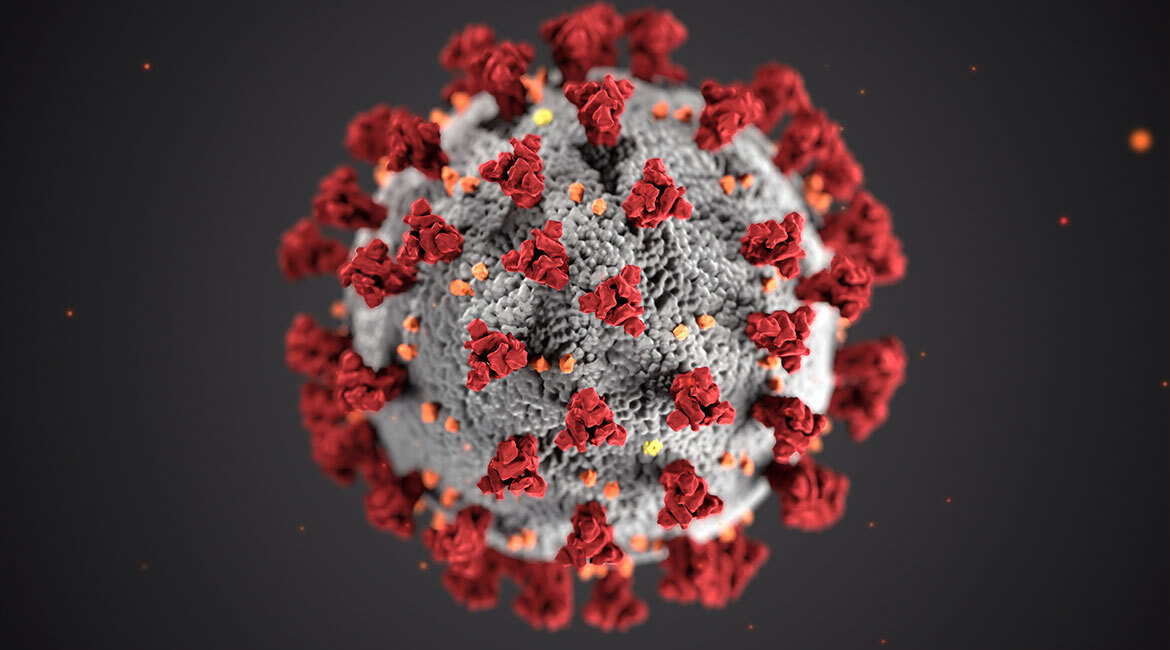
Unsplash.com. No restriction for use.
The COVID-19 crisis, which began in late 2019-early 2020 and continues to this day, has demonstrated the inefficiency and lack of infrastructure preparedness in several fields (medical, transportation, industrial) to deal with global pandemics. China, representing about 29% of global goods production, was the first to be affected by the virus, causing blockages and delays in the country’s supply chain. The rapid spread of the virus around the world, combined with the fact that the production of personal protective equipment (PPE) is mainly concentrated in China, has caused a severe shortage of PPE around the world. To enhance the level of preparedness for potential future pandemics, a respirator mask production kit based on 3D printing and thermoforming technologies is being proposed. This kit could be easily deployed in any part of the world in case of supply chain issues.
Introduction
COVID-19 is an infectious disease caused by the severe acute respiratory syndrome coronavirus-2 (SARS-CoV-2). The virus spreads primarily by person-to-person contact through respiratory droplets when an infected person coughs or sneezes, and through contact with contaminated surfaces or objects.
The ease of transmission of SARS-CoV-2 has resulted in a sharp increase in hospitalizations in many cities. One World Health Organization (WHO) guideline for the prevention and control of the epidemic is the use of appropriate personal protective equipment (PPE) in public areas. The urgent and overwhelming increase in demand for PPE, specifically N95 respirators, has led to a global supply shortage, demonstrating the inefficiency and unpreparedness of supply chains in the event of a force majeure or exceptional circumstances.
To avoid such difficulties in the future, it is important to be able to provide low-cost, technologically simple alternatives that could temporarily replace more sophisticated productions and be easily deployed anywhere in the world.
Respirator Mask Production Kit
The respirator mask production kit presented in this paper is a simple, low-cost and easy-to-implement option in manufacturing reusable PPE. This kit could temporarily alleviate supply shortages while meeting public health and safety needs, without requiring special infrastructure or skills. The main advantage of this technical solution is its manufacturing process (thermoforming), which is inexpensive and easy to deploy in any part of the world.
The proposed package includes the following components: (a) thermoforming mold, (b) assembly components, (c) production materials—low-density polyethylene sheets for the shell, filter material and valve material sheets, elastic bands, rivets—and (d) a compact thermoforming machine (Figure 1).
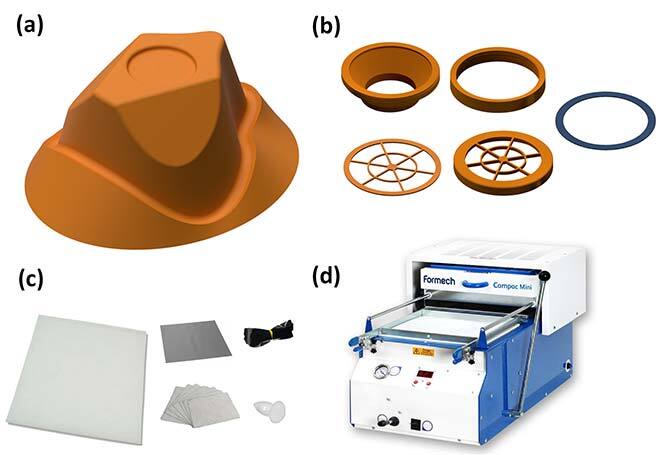
Figure 1. (a) Mold; (b) Assembly components; (c) Production materials; (d) Thermoforming machine
The complete PPE mask assembly is shown in Figure 2a, and the exploded view in Figure 2b. The use of highly flexible low-density polyethylene and the rounded edges of the shell, which are highly adaptable, provide a snug and comfortable fit for different facial shapes. In addition, polyethylene has good chemical resistance to commonly used cleaning agents (bleach, methanol, isopropyl alcohol). A simple exhalation valve system can be included in the mask design, a feature that is usually overlooked in order to simplify the product. The exhalation valve system reduces breathing resistance and hot air build-up, providing greater comfort to the wearer. If face masks with exhalation valves (Figure 2a-1) are prohibited—if unfiltered exhalation poses a threat to bystanders—the design is easily converted into a mask with three filters (Figure 2a-2). The mask is designed to facilitate filter replacement using a threaded cap system. The respirators can be easily disassembled to clean its components.
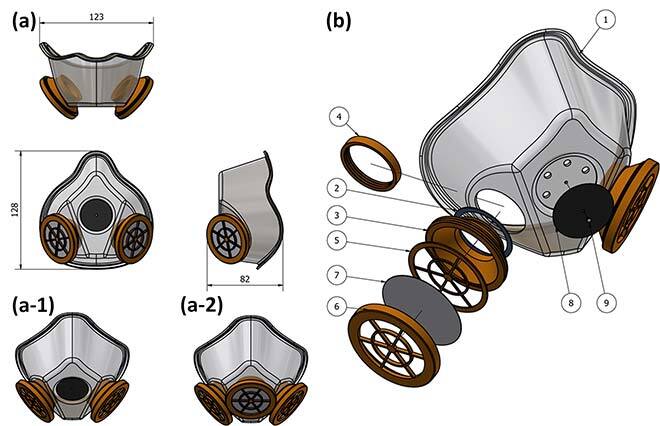
Figure 2. Different mask configurations: (a.1) Two filters and exhalation valve; (a.2) Three filters and no exhalation valve; (b) Exploded view of the PPE: (1) PPE face shell; (2) filter seals; (3) filter adapter; (4) filter nut; (5) filter holder; (6) filter cap; (7) HEPA filter; (8) silicone valve; (9) lock pin
The manufacturing sequence for the PPE mask shell (1) is shown in Figure 3 and consists of three steps: (1) the required mold size (S/M/L) is selected (Figure 3a); (2) vacuum thermoforming is performed (Figure 3b) and (3) the formed shell is cut and drilled to the required dimensions (Figure 3c).

Figure 3. Main steps in the fabrication of the face mask shell: (a) 3D printing of the male mold; (b) vacuum forming; (c) cutting and finishing the shell
After manufacturing the shell, the mask assembly is finalized by attaching the filters, valve (optional) and elastic band. An example of an assembled mask is shown in Figure 4.
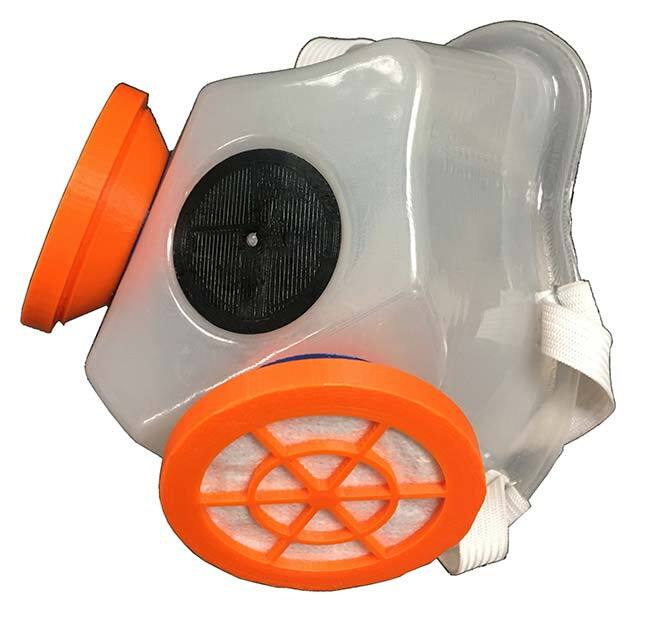
Figure 4. Assembled mask
Based on the quantity of PPE required, the total cost per complete set—considering a 50% depreciation of the Formech Compac Mini thermoforming machine, after 1 year of operation—and per mask—considering manufacturing costs of $35/hr and production time of 10 min/mask—was estimated. The complete kit to make 100 PPEs costs a total of $2,225, which works out to $28.20/mask or $0.28/use; the material includes 20 sets of replaceable filters, each reusable 5 times. The price per use was found to be comparable to the N95 masks—$0.30/use with 5 reuses per mask. In addition, a total cost/mask reduction of approximately 50% is achieved when the production capacity reaches 1000 items, resulting in a cost efficiency of $0.13/use.
It should be noted that before being used, the proposed mask must demonstrate filtration efficiency at least equivalent to that of the N95 mask and be tested according to industry standards (leakage, inhalation/exhalation, etc.).
Conclusion
The proposed PPE package could provide an independent and efficient means for on-demand production of respirators, without depending on the usual supply routes. The respirator shell is manufactured entirely with the vacuum thermoforming process, selected as the most suitable technology for this product given its high production capabilities, simplicity, and relative cost effectiveness compared to other mass production technologies. The estimated cost per use is comparable to the N95 PPE masks, confirming the validity of the proposed manufacturing method in case of supply shortages.



